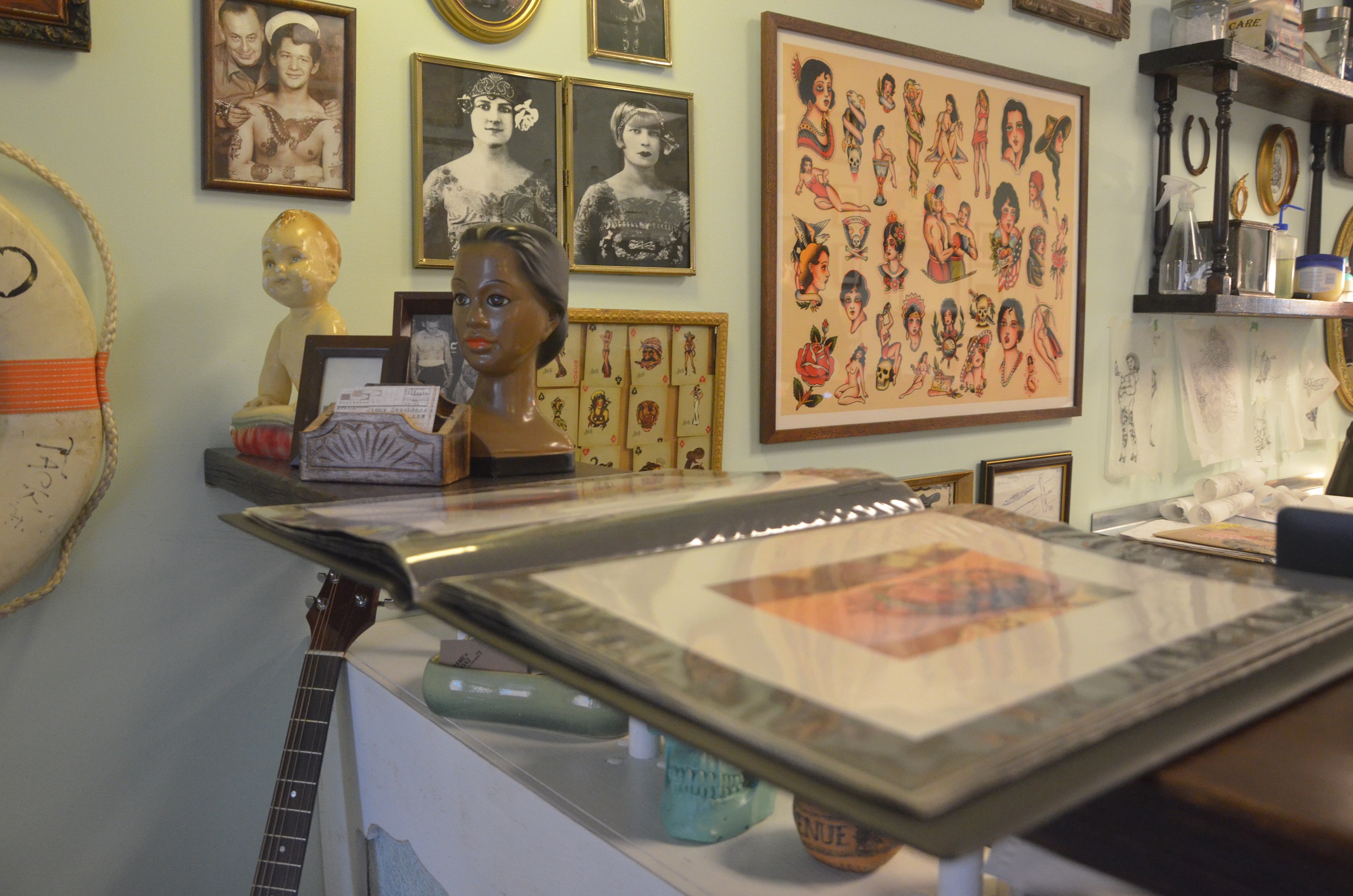The idea of an ‘artist’ can bring several images to mind. Some might envision a painter standing in front of a canvas with a dirty smock and a brush in hand. Others could see a writer bent over their computer or a director squinting through the lens of a camera. How about a woman in a short-sleeve shirt, exposing arms covered by tattoos, coming at you with a needle?
While tattoos are commonly considered art, they can conjure an image that some would deem below the standard of other artists. As Chicago Tribune writer Jon Anderson commented back in 1996: “Tattoo. What a loaded word it is, rife with associations to goons, goofs, bikers, tribal warriors, carnival artists, drunken sailors and floozies.” Yet the art form can’t be held responsible for the negative stereotypes associated with it, and if one were to walk up Bernard St. W., he or she would encounter Bodkin Tattoo, a shop every bit as respectable and visually appealing as an art gallery.
Stepping into Bodkin Tattoo you are met with a warm and inviting atmosphere. It becomes instantly clear that each of the three tattoo artists (Dominique Bodkin, Vincent Brun and David Choquette) are passionate and dedicated, not just to their work but to making the customer feel at home. Every facet of the interior design appears angled at destroying the preconceived notions of tattooing.
Bodkin has run the shop since its inception two years ago. Bodkin Tattoo is clearly her vision and represents her style of tattooing. “The shop is very old school. It’s my thing. I love those kinds of tattoos,” she said. This means those dying to receive Justin Bieber across their forehead might want to look elsewhere. If the patron is looking for a retro design reminiscent of 1950s, then they’ve come to the right place. Bodkin specializes in both custom and traditional designs, but does everything with a certain flair which reflects the passions and style of her artististry. The result is a very cool and unique tattoo image.
“For me it’s a bit different, for me my father was a tattoo artist too. And he tattooed all the time. I grew up in it.” Her father operated a tattoo shop in Quebec City for twenty-five years before Bodkin opened her own in Montreal.
When asked about the challenges of tattoo design and the obstacles of running a shop, Bodkin presents a very upbeat attitude: “It’s not really a big challenge. You do what you like and the process is not very difficult, you just have to work every day to get the reputation. When you do what you like, it’s never difficult.” However every business has its challenges. “Every day you learn something. Tattooing is a long process, it’s tough, you know. You need to figure everything [out] in the moment.”
For anyone considering the path of becoming a tattoo artist, Bodkin provides an interesting starting point. When asked if she ever drew or made any other type of art, she responded firmly, “No, I always have done tattoos.”
Montreal is fortunate to house a diverse selection of tattoo artists. Bodkin Tattoo is far from the only tattoo parlor in the city, although it is one of the finer and more well-respected ones. For those artists who feel the desire to create on something more living than a page, Bodkin offers strong advice: “Tattooing is the best option. It’s a language of art, it’s a language of expression, of self-expression.”
Bodkin Tattoo is located at 55 Bernard St. W..
